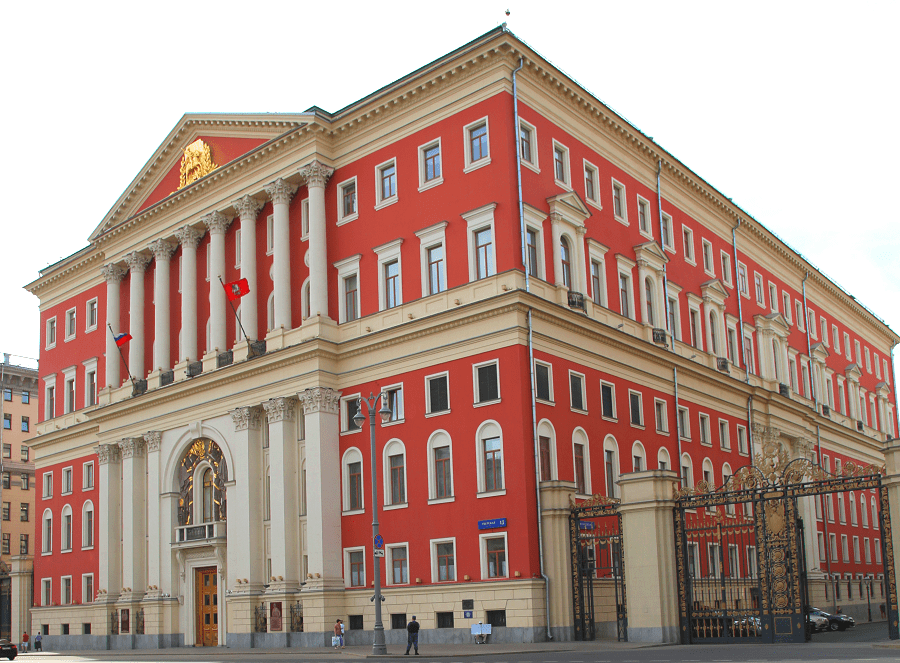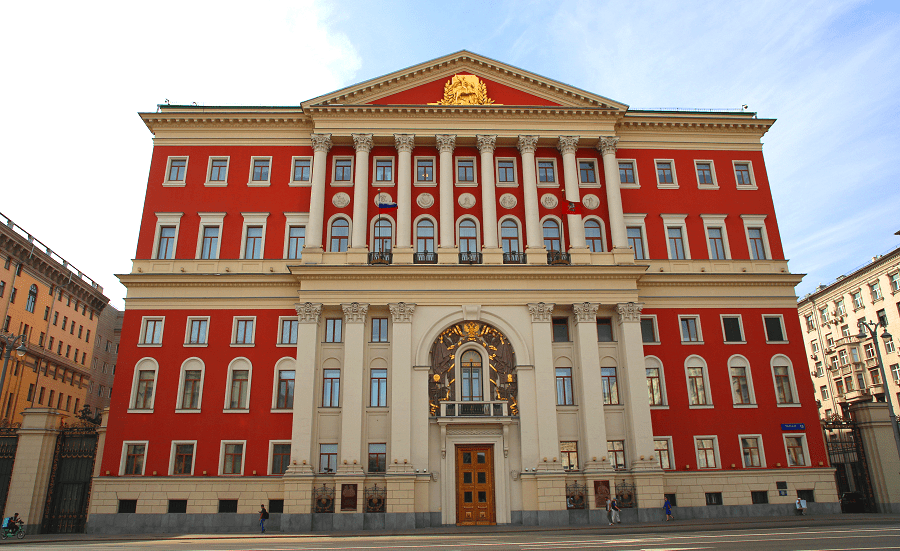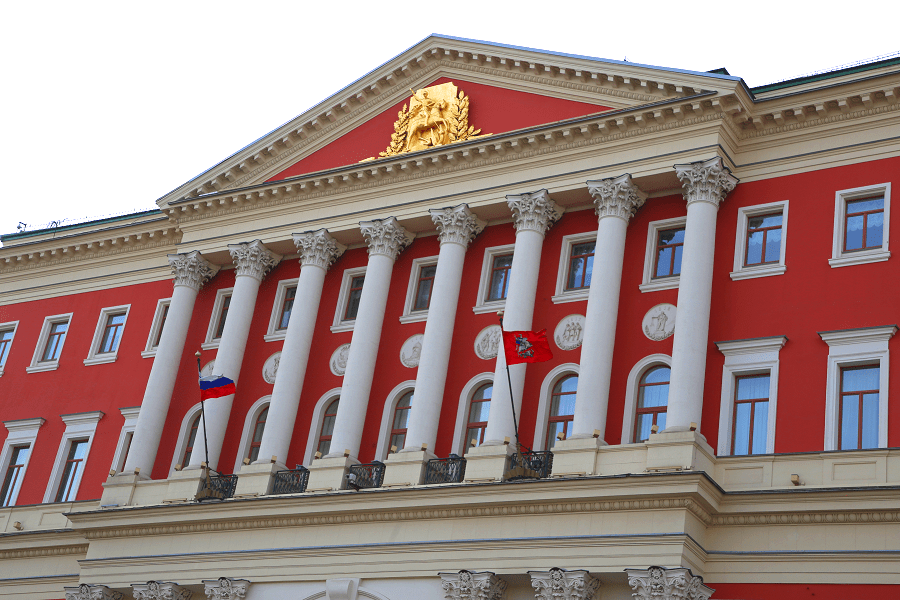The building of the Moscow City Hall (House of Golitsin, Chernyshev’s estate) is located in Moscow at Tverskaya Street, 13. It was built in 1782 according to the project of architect Matvey Kazakov and, until 1917, served as the residence of the Moscow governor-general. After the October Revolution, the Moscow City Council occupied the house. Since 1993, the building has been in the department of the Moscow government.
The first three-story palace in the style of mature classicism was turned into Tverskaya Square. It had an enfilade layout: visitors got into the White Hall by going up the main staircase, decorated with copper balusters. Its walls were finished with marble and figured bas-reliefs, and the floor was lined with parquet with dark oak inlay. Under the ceiling, there were special choirs for musicians, which supported paired columns from below. Through the marble Blue Hall, guests entered the Red Hall, which differed sharply from the strict design of the previous rooms. The room was designed in white, gold and scarlet shades and decorated with many mirrors, stucco and colored decorations. On the back side of the estate, side buildings created the courtyard.
There were 182 Dutch, 52 Russian and 17 ovens for space heating in the building, four fireplaces and 12 hearths.
It is known that in the future, the residence was repeatedly rebuilt per the requirements and tastes of the current mayor. By the end of the 18th century, a military parade ground was set up in front of the mansion, and in 1806 a house church was built on the premises, which existed until 1921.
In 1929-1930 the house was rebuilt according to the project of the architect Ivan Fomin. The manor complex was supplemented with a new six-story building in the constructivist style. The structure was separated from the main building by stone arches with passages. It is located on the back side of the palace on the site of the dismantled old outbuildings.
In 1937, during the expansion of Tverskaya Street (at that time – Gorky), the building of the Moscow City Council was pushed beyond the red line by 13.65 meters. It was decided to save the historic building and move the house to the required distance. The implementation of the project was complicated by the significant age of the building and its design features: the white stone foundation was not very durable, and on the first floor of the building, there was a ballroom that did not have internal support. In addition, preserving the house’s cellars, where the archive was stored at that time, was necessary. On September 16, 1939, work began on the transfer of the palace weighing about 20 thousand tons.
In 1988, a partial restoration of the palace’s interior took place with the restoration of historic interiors.
Nearest metro: Teatralnaya, Ohotny Ryad, Ploschad Revolyutsii, Pushkinskaya, Tverskaya, Chekhovskaya.
See also Architecture of Moscow, Palaces and most historic buildings of Moscow.













